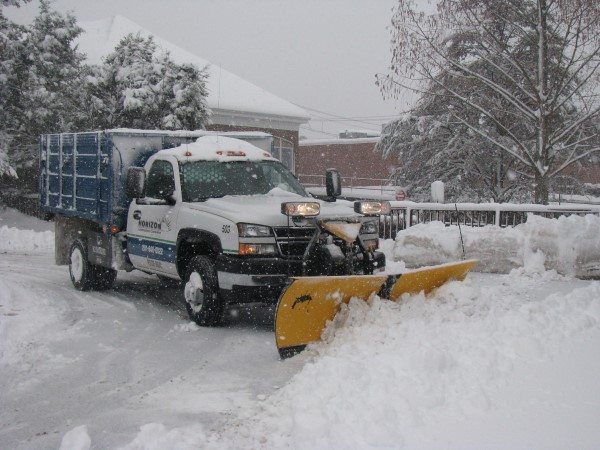When it comes to snowfall, we here in New Jersey have surely had our fair share this past winter. In fact, the winter of 2010 – 2011 was a record setter. According to the NJ State Climatologist, an analysis of thirteen recording stations produced an average of 38.1 inches of snow in January 2011. This is the 2nd snowiest month on record, dating back 117 years. January 1904 was the snowiest, as the state had a whopping average of 45.4 inches. For the weather bugs among you, I invite you to check out the NJ State Climatologist’s website: http://climate.rutgers.edu/stateclim/.
Because snow management is our business in the non-growing season, we have partnered with WeatherWorks Inc. (http://weatherworksinc.com/) to provide certified snow totals for each snow storm, so that we have an accurate record of just how much snow has fallen in each of the towns we service. The average total snowfall in these towns for the entire season was a phenomenal 66.2 inches. This total does not include the nine coating/dusting/ice events that also occurred. From the period of December 1, 2010 through March 11, 2011, our area had 31 days of snow and/or ice activity.
As part of the subscription service, we receive newsletters from WeatherWorks, and the February-March 2011 issue gave us a look into the extreme winter weather that hit most of the country this season. Here are some highlights:
Harsh Winter Weather for much of the U.S.
Not only was the East Coast experiencing storm after storm, the rest of the US had snow and cold that left the country ready for spring. Areas of the south that usually see winter highs in the 40s and 50s dealt with extreme cold and record snowfall, with a long duration of below freezing temperatures.
The most publicized problem area was the Dallas-Fort Worth Metroplex, as multiple snow and ice events caused major disruptions for Super bowl preparations. Temperatures stayed below freezing for 102 consecutive hours in early February at DFW Airport. Meanwhile, further south in Houston, sleet created nightmares on the roadways, in a city with no snow service equipment. Snow and ice in Atlanta, GA caused delays across the entire country with the brief closing of Hartsfield-Jackson International Airport on February 2nd. Oklahoma was quite possibly the hardest hit southern state with a slew of temperature and snowfall records being broken. A state record low of -31 F was recorded at Nowata, OK on February 10th. Tulsa was particularly hit hard this winter with a total of 26.1″ as of February 15, which is more than Philadelphia averages in a season.
The Great Lakes region was not spared either, as a raging blizzard came through Jan 31 – Feb 2. Missouri and Illinois took the brunt of this storm as paralyzing winds and snow crippled the region. Chicago had its third highest snow accumulation on record with 21.2” recorded.
So, why did so many Northeast cities end up with some of the coldest and snowiest weather on record from December to January? The answer is a meteorological phenomena known as blocking. In a nutshell, it means we had one high pushing into the arctic from Greenland and another high pushing in from Alaska, squeezing cold, arctic air out of polar regions down into the eastern half of the US.
This blocking is what kept the US colder than normal through December and January. With the push of the cold air southward, the jet stream took the same course, diving into the Southeastern US and sending it back up the Eastern Seaboard, allowing storms to run more easily up the East Coast. Since the air was so cold, the frequent storms produced snow and ice.
Again, for the weather bugs, 1 inch of rain converts to 5 inches of wet snow and 15 inches of dry snow. Several things determine snow density, such as air temperature, snow crystal structure and wind speed. A great article on the weight of snow can be found at http://www.islandnet.com/~see/weather/almanac/arc2007/alm07feb.htm).
And so now, the winter of 2010 – 2011 comes to a close, and we are all eagerly awaiting the arrival of spring. Here at Horizon Landscape, we are grateful to the professionals who provide us with the information we need to provide you with the best snow removal services possible. For more information on our commercial snow and ice management services, contact us by email or or call us at 201-848-0022.

